×
SparkFun will be closed on Tuesday, December 24th, and Wednesday, December 25th, in observance of the Christmas holiday. Any orders qualifying for same day shipping placed after 2:00 p.m. (MST) on Monday, December 23rd, will be processed on Thursday, December 26th, when we return to regular business hours. Wishing you a safe and happy holiday from all of us at SparkFun!
Please note - we will not be available for Local Pick up orders from December 24th-December 27th. If you place an order for Local Pick-Up we will have those ready on Monday, December 30th.
Hello everyone! I'm back and this is a great week for new products. We have a ton of cool stuff this week and there should definitely be a little something for everyone. Oh yeah, and the studio got a facelift!
Over the next few months we'll continue to tweak the studio. Don't worry, this isn't its final form. We still have some acoustical corrections and more, so stay tuned. Let's check out the list of products for this week.
Have you ever needed a specific resistor value and didn't want to go digging through parts bins? You might be interested in our decade resistance box kit. A decade box is a tool that contains resistors of many values accessed via mechanical switches. Adjust the knobs to output any of the discrete resistances offered by the box. Simply adjust the various knobs, and you can use this tool to substitute any resistor value you want. They are known as decade boxes because they have controls that correspond to the digits in a decimal number - a control for the ones position, a control for the tens position, a control for the hundreds position, and so on. Be warned, this kit requires a lot of soldering.
The tinyESC v2 from FingerTech Robotics is an ultra small bi-directional brushed motor controller for driving equally small DC motors. Don’t let the tinyESC’s size fool you, with the ability to take in a battery voltage of 6.5V to a whopping 36V and output a continuous current of 1.5A (3.0A peak), this little guy isn’t messing around! What it lacks in size, it makes up for in features. It has reverse polarity protection, overvoltage protection and even a battery eliminator circuit (BEC). This is the perfect speed controller for your ant or bettle weight robot!
Guess what?! Super-Awesome Sylvia, star of Super-Awesome Sylvia’s Super-Awesome Maker Show has a new book for young makers! It’s called, “Sylvia’s Super-Awesome Project Book: Super Simple Arduino!”. The book is a fun and colorful introduction to Arduino microcontrollers and programming, written and illustrated by kid engineer Super-Awesome Sylvia.
We’ve also developed the Sylvia’s Super Awesome Arduino Kit that includes all the parts needed to complete the experiments in the book. As Sylvia says, “Get out there and make something!”
These crimping pliers allow you to easily make your own wiring harnesses using crimp pins and cable housings. These pliers have a nice ratcheting action and a solid feel. They're good for most smaller wire crimping applications.
If you want to power your e-textiles product, you might not want a high discharge LiPo battery sewn into your clothing. That's why we offer a battery specifically designed for wearables. It's a lot like our standard 110mAh battery, but it has a specially designed protection circuit that cuts out at around 2C (or 240mA). This makes it safe for applications where conductive thread might accidentally short.
I have to admit, this next product sucks. It's true. Press the end of the plunger down, put it next to your project, and suck out the solder that's not supposed to be there. Solder suckers are essential for desoldering components. This solder vacuum has a black metal body with a hard plastic nozzle and buttons.
The SparkFun RFID Starter Kit is an all-in-one kit that offer everything you need to get your next RFID project off the ground. This kit includes our USB RFID Reader, ID-12LA RFID module, and two 125kHz RFID cards. This new version comes in a standard red box, instead of the plastic clamshell.
This is a 4 pack of wires that are pre-terminated with an alligator clip on one end and a hookup pigtail on the other. Alligator clips are a staple part for any workbench and with these cables you will be able to easily incorporate those clips into a breadboard, development platform, or anything else that you would normally be able to attach a hookup wire to.
The E-textile Basics Lab Pack is a basic wearables learning kit that can easily get you and a group of peers or students into the the world of e-textiles without having to deal with any programming or code. With this kit you will be able to learn how to sew in a variety of LEDs and other basic electronics into any fabric, power them, and make them twinkle within a few minutes!
The Hack Pack Workshop Supply Kit is a great way to get your hackerspace, classroom or communal workshop stocked with basic tools! Each Hack Pack includes a few hand tools like pliers and diagonal cutters as well as a few variable heat soldering irons and the necessary accoutrement. Also included? screw drivers, shrink tube, the legendary Heaterizer XL-3000 heat gun, third-hand, solder, and of course a few pairs of SparkFun Safety Glasses!
We now carry a 3-pack of screws that work with the MiP robotic platform proto boards. If you want to attach either the Proto-Pack or the Proto-Back boards to your MiP, you're gonna need 3 screws to do so.
That's it for me. That's all the new stuff we have for this week. Thanks for watching and reading. We'll be back again next week with more new stuff, don't worry! See you then!
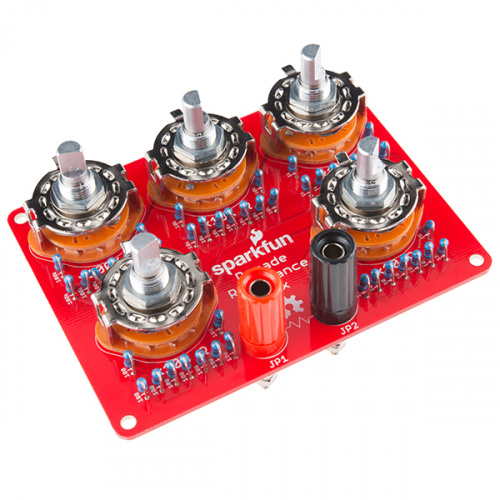
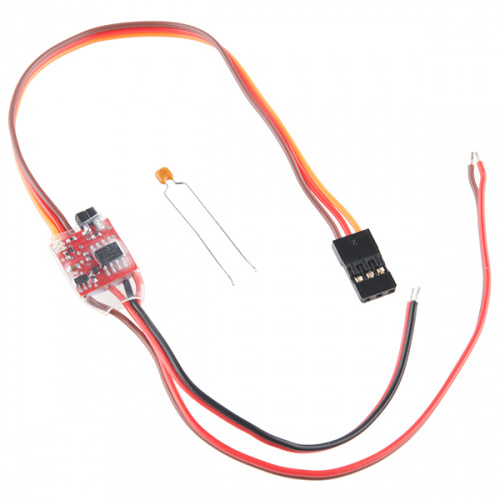
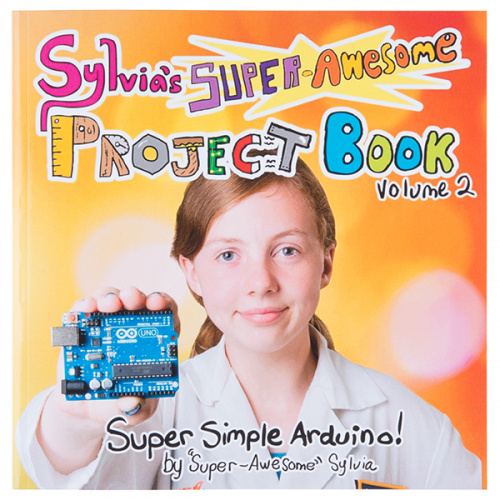
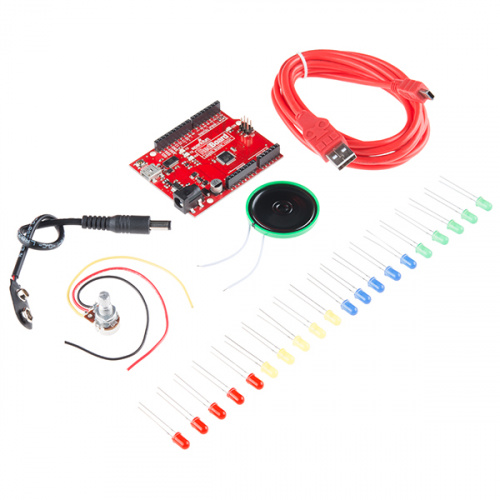
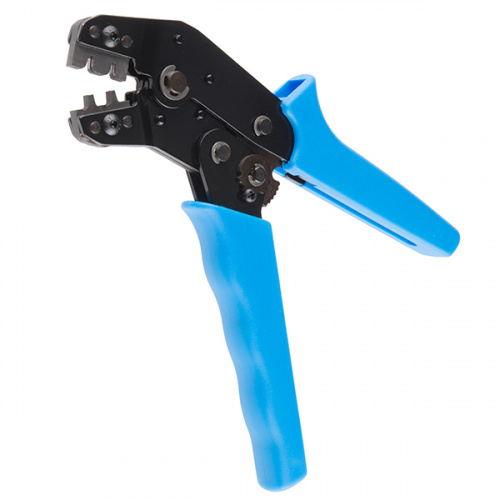
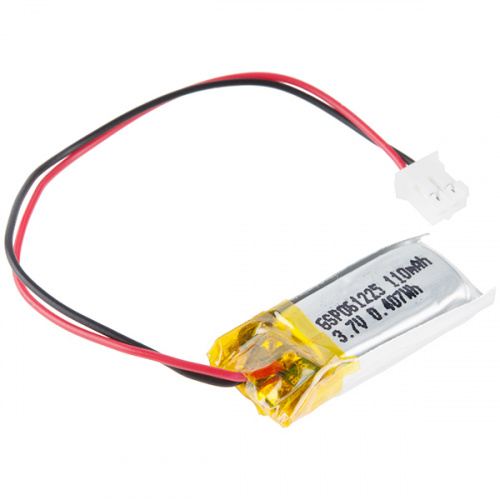

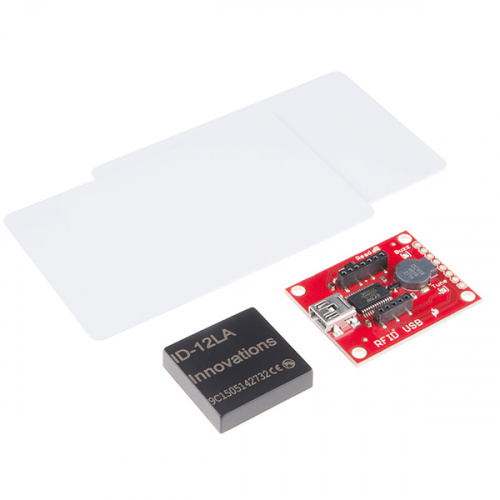

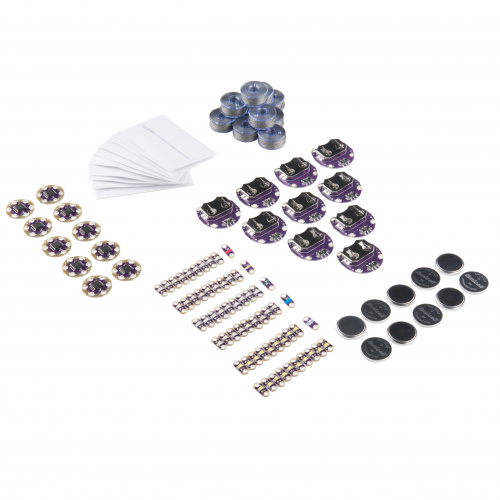
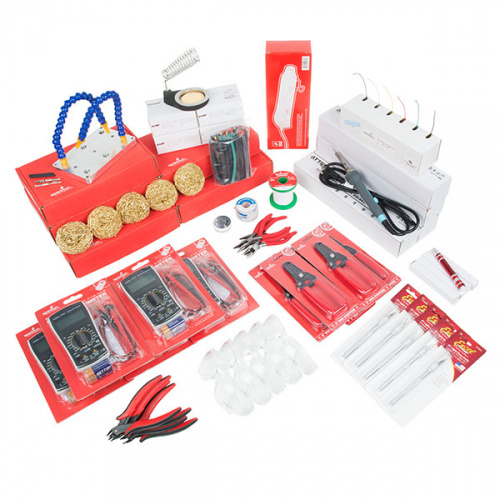

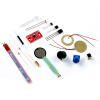






But with the decade box, if you dial in 10's across the board, 10,10, 10, 10, 10, where can you go?
I suggest a new one that is compatible with GTE knobs...
Byron needed to change the switches so it go to 11.
As a Canadian, I see your inferior philips screws, and I raise you robertson... At least they're metric though; that was a good move!
Now was it intentional, or a bug, but the last LED in the Sparkfun sign occasionally changes to a different colour. If it were coded to be a catch to see who was paying attention to Robert and who was watching the sign cycle - you got me, but if it were a bug i would love to see the code to see where it went wrong! Haha Great new studio Guys and Girls, can't wait to see what 'improvements' you make next, perhaps a few red boxes on the wall?
Random question re crimpers. I occasionally need to crimp connectors at work and we have a tool that looks pretty much like this one and was about the same price if I'm not mistaken. The problem I'm having is that when I crimp the tiny connectors (for the "standard" JST housings) the little metal tabs don't roll in on themselves cleanly. They often get "crushed" instead. What I have to do is get them started first by giving the tip of the little tabs a tiny bend inwards, then it works just fine.
Is that down to the crimping tool being crap or the little metal connectors being of poor quality? I mean, you shouldn't have to pre-bend the tabs to get them to roll up properly, right?
Yes, that's a problem that occurs with even the most expensive crimpers... I take a pair of needle nose pliers (or better yet, duckbills) and gently bend the tabs parallel (just squeeze the tab end between the plier jaws). When crimped, the tabs should fold neatly over. The problem occurs when the tabs are splayed to the point that they (obviously) crush instead of bend...
I use a turnigy 9x too. I actually just did a mix for differential thrust for a plane I haven't finished yet.
Cool new studio, looking forward to its completion. Could the channel letter sign also fade from white to red and red to white?
Normally I don't fault Sparkfun for their pricing. I understand why stuff costs a bit more here and I often pay that premium without any regrets. But that speed controller, identical in every way, can be found for half the price (at worst) elsewhere. I've even seen it as low as $6.00 for single units shipped from the US. I'd love to support Sparkfun, but with that big a gap in price, it'd be a waste.
You can certainly find an ESC that has similar specs for much cheaper. This isn't just a generic ESC like you'd find at hobby king or no eBay, it's a higher more robust and better designed. Like many things you get what you pay for. If you check with the battlebot guys, you'll find that this is their go-to ESC for the smaller weight classes.
We could have carried the cheapest we could find, but we wanted to carry a quality part.
You're getting into an area of supply/demand.
Your "elsewhere" has a lot of supply of these, and lower demand, hence the price gap. The other thing to remember is, are you sure they're using the same parts?
What's there to fault? Electronics is a very cutthroat industry. The way I look at is, you're paying for convenience with Sparkfun. Sure you're spending an extra few bucks on it, but you at least know the quality of the product you're getting, and have the support to prove that. With the other places you found it for cheap, my guess is eBay, you don't know if that is what you're really getting.
When you say "identical in every way," are you actually talking about same brand and everything, because it's not like we've marked this product up a lot from what I can see? I know nothing about this actual product and similar products from competitors, but if I look only at pricing compared to what we pay, this definitely isn't an outlier in any way. If we could get these for anywhere near $6, we'd be all over it.
Just a tip I have heard from RC guys. Always apply power first to your transmitter, then apply power to your receiver. Apparently you can fry receivers if you do this the other way.
You are in no danger of frying your receiver if you power it up before the transmitter. In fact, there are several brands of transmitters that require you to power up the receiver before the transmitter in order to bind the two to each other.
The reason we normally power up the transmitter first is so that the receiver doesn't inadvertently pick up rogue signals that make your RC vehicle go bananas. Imagine the surprise, or injuries, a large quadcopter could inflict if it started reacting to signals you weren't sending.
That said, today's more modern 2.4Ghz receivers aren't likely to ever "go rogue." Still not a bad habit to practice though.
Not a fan of those types of solder suckers, never had much luck with them, its always a fight to remove the iron and get the nozzle in while the solder is still liquid. I much prefer a cheapo radio shack sucker that is basically a solder iron with a hole in the tip and a rubber bulb on the handle.
With any luck the tip is made out of PTFE so that you can position it on the pin with the soldering iron in place, and then in one motion pull the iron away, move the sucker the last millimeter down, and push the button to suck up the solder.
If it's not PTFE then... yeah, I can see how there would be trouble.
Does the ESC have a drag brake? I'm very interested in it, but without a drag brake it's useless for my application.
From initial testing, it looks to have drag braking. When the motor is not being driven it is difficult to backdrive.
Is it me or is Roberts sound volume a little erratic?
I DIDN'T think SO
It might be my speakers. I'm listening to Dave over at the EEVblog and its also going in and out.